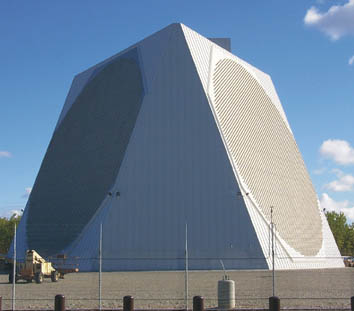The Ultimate Guide to ShakeAlert: Earthquake Early Warning Technology
I'll never forget the Loma Prieta earthquake. I was a kid, building a Lego castle, when suddenly everything started shaking. I dove under the kitchen table, terrified. If only we'd had a few seconds' warning... That memory fuels my passion for earthquake preparedness, and specifically, the incredible potential of systems like ShakeAlert.
Understanding ShakeAlert: A Revolutionary Alert System
ShakeAlert is an earthquake early warning (EEW) system designed to detect significant earthquakes quickly and send alerts to people and systems in harm's way before the arrival of strong shaking. Developed by the U.S. Geological Survey (USGS) and its partners, including universities and state geological surveys, USGS ShakeAlert leverages a network of seismic sensors to detect the initial P-waves (primary waves) of an earthquake. These waves travel faster, but cause less damage, than the S-waves (secondary waves) and surface waves that follow. The system uses this head start to provide a crucial few seconds to minutes of warning, allowing people to take protective actions.
The primary goal of ShakeAlert is to minimize the impact of earthquakes on communities. This is achieved through a variety of actions triggered by the alerts, including: automatic braking of trains, halting surgeries, sounding alarms, and personal protective actions like "Drop, Cover, and Hold On". Public safety is at the core of ShakeAlert's mission.
How ShakeAlert Works: A Step-by-Step Process
The ShakeAlert system operates through a sophisticated, multi-stage process. Here's a breakdown:
- Detection: Numerous seismic sensors strategically placed throughout earthquake-prone regions continuously monitor ground motion.
- Data Transmission: When an earthquake occurs, these sensors instantly transmit real-time data to processing centers.
- Location and Magnitude Estimation: Sophisticated algorithms rapidly analyze the incoming data to determine the earthquake's location, depth, and magnitude estimation.
- Alert Generation: If the estimated magnitude estimation and potential shaking intensity meet predefined thresholds, the system automatically generates and disseminates alerts.
- Alert Delivery: Alerts are delivered through various channels, including mobile apps, Wireless Emergency Alerts (WEA), and partnerships with infrastructure operators and businesses.
The speed and accuracy of each of these steps are critical to the effectiveness of the system. The more quickly an earthquake is detected and the more accurately its magnitude and location are determined, the more lead time people have to react.
Key Components of the ShakeAlert System:
Seismic Network Density
The density of seismic sensors is crucial. A denser network allows for faster and more accurate detection of smaller earthquakes, leading to quicker alert generation. Areas with fewer sensors may experience longer delays in receiving alerts or may not receive alerts for smaller events. A 2024 report by the USGS emphasized that increasing the density of seismic networks in California, Oregon, and Washington could significantly improve the performance and reliability of ShakeAlert.
Processing Algorithms
Sophisticated algorithms are used to process the real-time data from the seismic sensors. These algorithms must be able to distinguish between different types of seismic waves and accurately estimate the earthquake's parameters (location, depth, magnitude) even with limited initial data. These algorithms are constantly being refined and improved.
Alert Delivery Mechanisms
The alerts are delivered through multiple channels, including mobile apps, Wireless Emergency Alerts (WEA), and partnerships with infrastructure operators and businesses. The speed and reliability of these delivery mechanisms are essential to ensure that people receive the alerts in time to take protective action. Redundancy in alert delivery is also important, in case one channel fails.
The Benefits of Earthquake Early Warning Systems
The advantages of earthquake early warning systems like ShakeAlert are significant and multifaceted. While the amount of warning may only be a few seconds, or sometimes more than a minute, that time can be used to dramatically reduce risk and improve earthquake preparedness.
- Personal Safety: Individuals can Drop, Cover, and Hold On, moving to a safer location or protecting themselves from falling objects.
- Automated Actions: Systems can automatically shut down critical infrastructure like gas lines, electrical grids, and transportation systems, minimizing damage and preventing secondary disasters.
- Medical Procedures: Doctors can halt sensitive surgeries, preventing potentially life-threatening complications.
- Transportation Safety: Trains can be slowed or stopped, reducing the risk of derailment.
- Business Continuity: Businesses can protect data, equipment, and personnel, minimizing downtime and economic losses.
- Reduced Panic: Receiving an official alert can help reduce panic and encourage informed decision-making.
Emergency response teams can also use the early warning to prepare for the impending shaking, enabling them to more effectively deploy resources and coordinate rescue efforts.
Limitations and Challenges of ShakeAlert
Despite its potential, ShakeAlert is not a perfect system and faces several challenges. One significant limitation is the "blind zone" near the epicenter of an earthquake. Because the alerts are based on the detection of P-waves, locations very close to the epicenter may not receive a warning before the arrival of strong shaking. The size of this "blind zone" depends on the depth and magnitude of the earthquake.
Another challenge is the accuracy of magnitude estimation in the very early stages of an earthquake. Initial magnitude estimates can sometimes be inaccurate, leading to false alarms or missed alerts. However, the system continuously refines its magnitude estimates as more data becomes available.
Finally, widespread adoption and public education are crucial for the success of ShakeAlert. People need to understand how to respond to an alert to maximize its benefits. Continuous public awareness campaigns and educational programs are essential to ensure that people know what to do when they receive a ShakeAlert notification.
| Limitation | Description | Potential Mitigation |
|---|---|---|
| Blind Zone | Areas near the epicenter may not receive a warning. | Improved sensor density near fault lines, refined algorithms. |
| Magnitude Estimation Errors | Initial magnitude estimates can be inaccurate. | Continuous algorithm improvement, data refinement. |
| False Alarms | Occasional alerts for minor earthquakes. | Refined alert thresholds, improved algorithms. |
| Public Awareness | Lack of public understanding of alert response. | Continuous education programs, public awareness campaigns. |
The Future of ShakeAlert: Enhancements and Expansion
The ShakeAlert system is continuously evolving and improving. Ongoing research focuses on enhancing the speed and accuracy of magnitude estimation, reducing false alarms, and expanding the system's coverage area. Integration with smart technologies, such as smart homes and connected vehicles, is also being explored to automate protective actions.
Future plans include expanding the seismic sensors network, particularly in underserved areas, and improving the alert delivery mechanisms to reach a wider audience. The goal is to create a comprehensive earthquake early warning system that protects communities and minimizes the impact of earthquakes across the West Coast and potentially beyond.
According to a 2023 USGS report, further investment in ShakeAlert and its associated technologies could save billions of dollars in economic losses and, more importantly, countless lives in the years to come. The future of earthquake preparedness relies heavily on the continuous improvement and expansion of systems like ShakeAlert.
Comparing ShakeAlert to Other EEW Systems Worldwide
While ShakeAlert is a leading earthquake early warning system, it's not the only one in the world. Several other countries, including Japan, Mexico, and Taiwan, have implemented their own EEW systems. These systems vary in terms of their technology, coverage area, and alert delivery mechanisms.
Japan's Earthquake Early Warning (EEW) system, known as UrEDAS, is one of the most advanced in the world. It uses a dense network of seismic sensors and sophisticated algorithms to provide rapid alerts. Mexico's SASMEX system provides warnings to Mexico City, leveraging seismic sensors along the Pacific coast. Taiwan's EEW system focuses on providing rapid alerts to the densely populated island. The operational ground motion thresholds, alert delivery mechanisms, and sensor density are different across the various systems. For example, some systems may focus on reaching the general public while others may cater to industrial users.
Analyzing the successes and challenges of these different systems provides valuable lessons for the ongoing development and improvement of ShakeAlert. For example, lessons regarding effective alert delivery from the Japanese experience have informed the development of ShakeAlert's mobile app. Best practices in real-time data processing gleaned from global systems also inform ongoing improvements.
Key Differences in Global EEW Systems
Sensor Density and Placement
Different countries have different densities of seismic sensors, and the placement of these sensors can also vary depending on the tectonic environment. A country with a very active fault line (e.g., Japan) may require a higher sensor density than a country with less frequent earthquakes. Sensor placement is also influenced by population density and infrastructure.
Alert Dissemination Methods
The methods used to disseminate alerts can also vary. Some countries primarily rely on mobile apps, while others use Wireless Emergency Alerts (WEA) or sirens. The choice of alert dissemination method depends on factors such as cell phone penetration rates, the availability of reliable communication networks, and the characteristics of the population. Some areas may require low tech alerts like sirens in case of power outages or limited cell service.
Algorithm Sophistication
The algorithms used to process the seismic data and generate alerts can also vary in complexity. Some systems use relatively simple algorithms, while others use sophisticated machine learning techniques. The choice of algorithm depends on factors such as the available computing power and the desired level of accuracy.
| System | Country | Key Features |
|---|---|---|
| UrEDAS | Japan | High sensor density, advanced algorithms, public alert system. |
| SASMEX | Mexico | Focus on Mexico City, coastal sensor network. |
| EEW | Taiwan | Rapid alerts, densely populated island. |
| ShakeAlert | USA | West Coast coverage, mobile app, WEA integration. |
FAQ: Frequently Asked Questions About ShakeAlert
Here are some frequently asked questions about the ShakeAlert early warning system:
- Q: How much warning will I get from ShakeAlert?
A: The amount of warning varies depending on your distance from the epicenter. It could be a few seconds to tens of seconds. - Q: What should I do when I receive a ShakeAlert?
A: Drop, Cover, and Hold On. Protect your head and neck. - Q: Is ShakeAlert available everywhere?
A: Currently, ShakeAlert is primarily available in California, Oregon, and Washington. - Q: How accurate is ShakeAlert?
A: While generally accurate, magnitude estimation can have errors, especially in the initial seconds. Refinement occurs as more data is gathered. - Q: How is ShakeAlert funded?
A: ShakeAlert is funded by the USGS, state governments, and private donations. - Q: How does ShakeAlert protect my privacy?
A: The system only detects movement, no personal information is transmitted.
Q: What is the difference between a ShakeAlert and a traditional earthquake warning?
A: A ShakeAlert leverages seismic sensors to detect an earthquake before the strongest shaking arrives, providing precious seconds for action. A traditional earthquake warning, such as an Emergency Alert System (EAS) message after an earthquake has already occurred, can provide information about the earthquake's magnitude estimation and location, but it does not offer advance warning.
Q: What is the role of local and state governments in ShakeAlert?
A: Local and state governments play a crucial role in the success of ShakeAlert. They are responsible for integrating ShakeAlert into emergency response plans, educating the public about the system, and ensuring that critical infrastructure operators are able to receive and act on alerts. Collaboration between government agencies, businesses, and community organizations is essential for effective earthquake preparedness.
The ShakeAlert system represents a significant advancement in earthquake preparedness. By providing even a few seconds of warning, it empowers individuals and organizations to take action to protect themselves and minimize the impact of earthquakes. We encourage you to learn more about ShakeAlert, download the app if available in your region, and share this information with your friends and family. Leave a comment below with your questions or experiences with earthquake early warning!


